- Home
- Business Radios
- Consumer Radios
- Accessories
- Antennas
- Antenna Analyzers
- Audio Accessories
- Batteries
- Belt Clips
- Bundles and Kits
- Cases and Holsters
- Chargers
- Coaxial Cable
- DC Power Accessories
- DC Power Supplies
- Dummy Loads
- Duplexers
- Faraday Bags
- Miscellaneous Accessories
- Mounts
- Power SWR Meters
- Programming Cables and Software
- Replacement Parts
- Solar
- Test Equipment
- By Radio Type
- By Radio Brand
- Services
- Other Products
- Buyer's Guide
- Resources
Compare (0)
You have no items to compare.
Same Day Shipping! Orders placed before 5 p.m. EST ship same day!
News
This is a list of news and topical articles related to two way radios and radio communications.
-
The Vertex Standard EVX-261 is now available
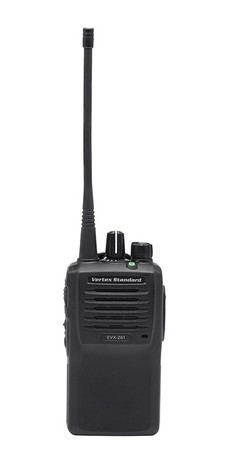 If your business or organization is waiting for the right moment to migrate from analog to digital, your moment may have arrived. Vertex Standard just launched the new EVX-261 DMR digital portable two way radio, and it is certainly one handheld to consider.
If your business or organization is waiting for the right moment to migrate from analog to digital, your moment may have arrived. Vertex Standard just launched the new EVX-261 DMR digital portable two way radio, and it is certainly one handheld to consider.Touted by the manufacturer as the "perfect entry radio", the EVX-261 is the latest offering in Vertex Standard's eVerge Series, a line of digital radios designed to make the digital/analog mix more affordable without sacrificing basic features or quality.
The EVX-261 seems to meet those parameters. Of course, the audio quality is great, which is something of a given, since this is primarily a digital radio, and crystal clear voice reception is a natural part of the digital experience to begin with. Other functions such as All Call, Group Call and Individual Call have also become a standard on digital two way radios, as are basic privacy and security features.
Even its analog capabilities are somewhat expected. Most DMR radios on the market today are capable of both digital and analog operation, and many can operate in a mixed mode. The EVX-261 is no exception. It includes analog features supported by many other business radios in its class, including 2-tone and 5-tone encode/decode, DTMF, MDC1200® ANI encode, and CTCSS/DCS capability, so if you have a mixed fleet of digital and analog radios in your operation, the EVX-261 will fit right in.
In addition, the EVX-261 features a Transmit Interrupt, allowing the user to circumvent or interrupt a transmission in progress to receive a message of a higher priority. It also operates in Direct Mode, allowing you to double call capacity by using a single frequency for two paths of communication.
These are all good features, to be sure, and as digital radios go, the EVX-261 does meet general expectations. Yet there is something about this radio that makes it worth serious consideration, and it's not just the price.
What sets this radio apart from other entry level business digital DMR radios on the market is the battery system. That's right, the battery system.
The Vertex Standard Universal Battery System, also known as the UNI battery, is a standardized battery and charger system for Vertex Standard radios. Introduced in 2014, the UNI system allows the same battery and charger to be used with any series and model of Vertex Standard business radio, providing cross-compatibility with power options across the entire line.
In other words, if you have an existing fleet of analog Vertex Standard two way radios equipped with UNI batteries and chargers, and you add an EVX-261 to the mix, you won't need to add a different set of power accessories to accommodate it. The EVX-261 will fit right in. How many other two way radios, digital or analog, can do the same thing?
Considering this, the EVX-261 may be a good deal after all. Compatibility with DMR, MOTOTRBO, and other analog business radios aside, as well as the features and functionality of many other business radios in its tier, The EVX-261 holds its own as expected. When factoring in cross-compatibility with accessories, especially power options, the Vertex Standard EVX-261 may very well have the edge.
It's certainly something to consider.
For full specifications, download the Vertex Standard EVX-261 product sheet.
-
FCC to increase GMRS license application fee
The application fee for a GMRS license is about to become more expensive. The FCC announced July 7, 2016 an order to adopt an amendment to its schedule of application fees for the processing of license applications and other filings. Included among the fee changes is a five dollar increase to the current application fee for a General Mobile Radio Service license. The already hefty fee for a GMRS license application will increase from $65 to $70.
Also known as Section 8 application fees, The Schedule of Application Fees contains the Schedule of Charges for a number of categories and includes the procedures for the modification and collection of the fees. The FCC is required to review these fees every two years and adjust them based on changes in the Consumer Price Index.
According to the order released July 7, They had no choice in the matter. FCC had to do it.
"The methodology and timing of adjustments to application fees are prescribed by statute at 47 U.S.C. § 158(b). Because our action implementing the statute leaves us no discretion, prior notice and comment is unnecessary pursuant to 5 U.S.C. § 553(b)(3)(B). This Order is also exempt from the requirements of the Regulatory Flexibility Act, 5 U.S.C. § 601 et seq., pursuant to 5 U.S.C. § 601(2). Copies of this Order will be sent to Congress and the Comptroller General in compliance with the Congressional Review Act, 5 U.S.C. § 801 et seq."
The FCC adopted these changes July 6 by order. (FCC No. 16-87). The fees will become effective 30 days after publication in the Federal Register.
If you plan to apply for a GMRS license, you may want to think about doing it now.
A wide selection of FRS and GMRS two way radios is available from Buy Two Way Radios.
-
The Wouxun KG-D901 DMR digital radio is coming soon!
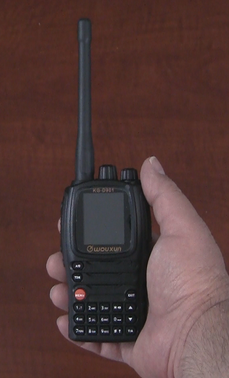 Late last year Wouxun announced plans to enter the digital radio market with a new portable handheld DMR radio. We obtained some early product specs and broke the news on Episode 99 of The Two Way Radio Show Podcast. At the time Wouxun hinted at a launch date sometime in early 2016. Well, the wait is almost over. We are excited to announce that we just received our demo models of the new Wouxun KG-D901 DMR Digital Two Way Radio!
Late last year Wouxun announced plans to enter the digital radio market with a new portable handheld DMR radio. We obtained some early product specs and broke the news on Episode 99 of The Two Way Radio Show Podcast. At the time Wouxun hinted at a launch date sometime in early 2016. Well, the wait is almost over. We are excited to announce that we just received our demo models of the new Wouxun KG-D901 DMR Digital Two Way Radio!At first glance, The KG-D901 looks almost identical to the analog KG-UV9D and KG-UV9D Plus multi-banders, with the large, color LCD display first introduced in popular KG-UV8D and now considered a standard fixture in the latest generation of Wouxun portable handheld transceivers. It has the same keypad layout found on both the 8D and 9D models and the same array of buttons on the side. It has the volume and channel knobs, TX/RX LEDs and flashlight typically found on the other Wouxun radios as well.
As soon as you turn it on, however, the similarities end. It may look and feel familiar on the outside, but this is not a typical analog Wouxun radio at all. It's digital. As a Wouxun product, the KG-D901 is something entirely new.
Key Features
Unlike the 8D and 9D, the D901 is a single band transceiver, in your choice of either a UHF or VHF version. Most of the primary features are expected, and compared to other DMR digital radios, they may not seem particularly unique. However, there is one item on the list that may give the D901 a little extra. It is noted in bold.- 400-470MHz UHF frequencies (UHF Model)
- 136-174MHz VHF frequencies (VHF Model)
- Analog and Digital Modes
- Time Division Multiple Access (TDMA) digital technology
- Direct and Repeater Modes
- 16 memory channel and 2 Zones
- Built-in CTCSS/DCS signaling in analog mode
- Text Messaging (Digital Mode)
- All Calls, Group Calls, Select Calls (Digital Mode)
- Scrambler Function (Analog Mode)
- Digital Encryption
- Microphone Modulation Setting
- IP57 Water Resistant
Full specs are available from the Wouxun KG-D901 product sheet.
Accessories
The KG-D901 has the same SMA Female antenna connector commonly used on other Wouxun handhelds, and there is a plethora of third party antennas available to choose from, so if you like to fine tune your antenna options, such customization is very easy. It also uses the Kenwood K1 audio connector that is so widely used on imported radios today, it is almost considered a standard. This opens up seemingly limitless options for audio accessories and add-ons.More importantly, the KG-D901 uses the same battery pack as the KG-UV9D, which means other power accessories such as the desktop charger and battery eliminator are compatible as well. This cross-compatability adds greater functionality to both models and makes each a more practical compliment to the other when mixing and matching transceivers.
Programming
Here's more good news. Unlike some other digital radios, which may require a different programming cable than their analog counterparts, the KG-D901 is compatible with the existing Wouxun (or Baofeng) serial to USB cable equipped with the now standard Kenwood K1 connector. If you already have one of these cables for another Wouxun handheld, it should work with the KG-D901. If you have the XLT Painless Programming Cable, that's even better, because the KG-D901 has been tested to work with the it, as well (If you don't have the XLT Painless Programming Cable yet, you may want to consider one, especially if you just upgraded your computer to Windows 10).Of course, the D901 requires its own programming software, and for obvious reasons. It's a different kind of radio, the first Wouxun DMR of its kind. The D901 is not currently compatible with CHIRP, so you will need the Wouxun software. It's a little more involved than most programming software for the analog models, and can be a challenge if you have never programmed a digital radio. It is tested to work in Windows 10 without using Compatibility Mode.
The KG-D901 package includes one KG-D901 single band UHF or VHF two way radio (depending on your version of choice), a 7.4v, 2000mAh battery pack, belt clip, antenna, desktop charger, AC power cord, and wrist strap. The demo models we received did not include a manual, but we expect one to be in the box when the final version of the radio ships from Wouxun.
Update: The Wouxun KG-D901 (UHF version) is FCC Part 90 type accepted for use on business frequencies, so companies and organizations can go digital with this radio as well!
The Wouxun KG-D901 is
expected to arrive early summer 2016now available. For the latest news and announcements on this and other new products, subscribe to our feed! -
The Wouxun KG-UV8E Tri band amateur radio is here!
 What is better than a dual band handheld two way radio? Why, a tri-bander, of course. Now, it's here. Say hello to the Wouxun KG-UV8E tri-band transceiver.
What is better than a dual band handheld two way radio? Why, a tri-bander, of course. Now, it's here. Say hello to the Wouxun KG-UV8E tri-band transceiver.The KG-UV8E is based on the very popular Wouxun KG-UV8D, the dual band portable handheld radio best known for its large color display, cross band repeat capability and true simultaneous two band reception, all at a very low price point. At the moment of its introduction in 2014, the KG-UV8D was an instant hit, and it is still the handheld of choice among many hams today.
However, the 2 meter and 70cm bands are becoming crowded, and many hams are moving to the 1.25 meter band for some breathing room. The problem? There aren't a lot of 1.25 meter radios out there, and the ones that are available tend to swap the beloved 2 meter band for it. This means amateurs had to choose between a dual bander with either 1.25m VHF and UHF, or 2m VHF and UHF. If you used a handheld for both, you either had to carry two dual band radios, or give up a VHF band altogether.
The solution? Wouxun created a portable handheld that includes all three. It's the KG-UV8E, and it's available now from Buy Two Way Radios!
The Wouxun KG-UV8E has all the same features of the KG-UV8D along with the feature upgrades of the KG-UV8D Plus. In fact, for all intents and purposes, it is a UV8D Plus, with the addition of one extra band for full transmit and receive on 1.25 meters from 222Mhz to 225Mhz.
The Wouxun KG-UV8E supports the following bands and frequency ranges:
RX Only RX and TX Band Frequencies Band Frequencies VHF 136-174MHz VHF 144-148MHz VHF 220-260MHz VHF 222-225MHz UHF 400-520MHz UHF 420-450MHz With an apparent over saturation of dual band amateur radios covering the 2 meter and 70cm bands already on the market globally, coupled with an increase in activity on the limited frequencies within those two bands, more and more amateurs are searching for some other space on the radio spectrum they are licensed to use, but isn't quite as crowded. The obvious choice? It's the 1.25 meter band, or as more commonly, if not inaccurately called, the 220MHz band (the frequencies licensed for ham use are actually between 222Mhz and 225MHz). Underused for years and all but forgotten, 220MHz is coming back to life, and in a big way.
The advantages of the 1.25 meter band are obvious and easy to list:
- Accessible to all licensed amateur radio operators
- Still considered VHF, just below UHF
- Between 1.25m, 2m and 70cm, 1.25m is considered the band with the best propagation
- repeaters are available, but are not as crowded
- Not as active, so it is quieter, with less interference
There's just one disadvantage. Access to the band has been a challenge, simply because there aren't many 1.25 meter radios on the market. That is, it was a challenge, until now.
Wouxun intends to change all that and give amateurs what they want and need, one handheld radio to access the three higher frequency bands all technician, general and extra class amateurs are licensed to use, and to maximize the entire experience with a range of capabilities and features one would only expect from a handheld transceiver costing much more. They may just do it with the KG-UV8E.
But don't just take our word for it. Take a look at the Wouxun KG-UV8E and tell us what you think.
Take a look at the Wouxun KG-UV8E product sheet for full specs.
-
Tytera changes product brand name to TYT
Tytera announced plans this week to change the brand name on their line of two way radios from Tytera to TYT next month. According to an official spokesperson from Tytera, starting May 2016 the company will begin to replace the Tytera brand on their entire product line with the name TYT.
Products such as the MD-280, the extremely popular MD-380, the mobile TH-7800 and the new waterproof MD-390 digital radio will be re-branded as TYT. The new label will likely appear this summer as existing Tytera inventory is exhausted and products are replenished. New Tytera products due this summer will likely carry the TYT brand at launch.
Details are sketchy, but according to TYT the name change is due to a complaint from rival radio manufacturer Hytera. This is possibly related to the similarities between the two names.
The company said all products manufactured by Tytera will be affected by the change. Buy Two Way Radios is an authorized Tytera dealer.
-
Announcing the Tytera MD-9600 DMR Digital Mobile Radio!
AVAILABLE SUMMER 2016!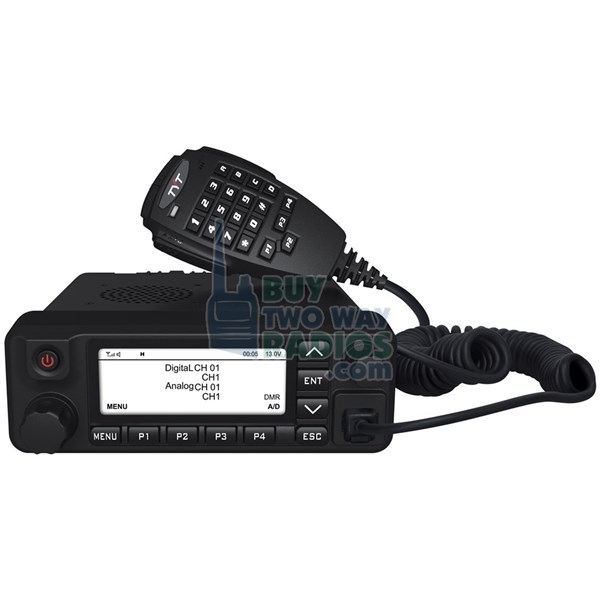 Tytera shook the world of digital radio in 2015 with the introduction of the MD-380, a portable handheld capable of both DMR and analog operation at an analog radio price.
Tytera shook the world of digital radio in 2015 with the introduction of the MD-380, a portable handheld capable of both DMR and analog operation at an analog radio price.Digital radios were outrageously expensive, and were priced out of the hands of many.
Then the MD-380 came along. It changed everything. For the first time, DMR was truly available to the masses, so to speak. Amateur radio operators on a Baofeng budget could experiment within the digital realm without spending hundreds of dollars on digital equipment, and because the UHF version was Part 90 type accepted for commercial use, small businesses could afford to keep up with their competitors and migrate to digital without the exhorbitant cost. The MD-380 was a game changer, and turned Tytera into a respected brand in the DMR marketplace almost overnight.
Now they are about to do it again. Get ready for the Tytera TYT MD-9600 Digital Mobile Radio!
Yes, that's right, the long-awaited announcement is here. Tytera has introduced a new mobile two way radio capable of operation in both digital and analog modes.
According to Tytera, the MD-9600 operates on 400-480MHz frequencies at up to 45 watts (UHF model) or 136-174MHz VHF at up to 50 watts (VHF model). As a DMR radio, It uses Time Division Multiple Access(TDMA) technology and is compatible with MotoTRBO Tier I and II.
The TYT MD 9600 boasts 1000 channels and 250 zones with 16 channels for each zone. Features include Private Call, Group Call, All Call, a lone worker mode, ANI function, encryption, short text messages, CTCSS/DCS encode and decode, power save mode, low power alarm, an emergency alarm and VOX capability. The console features a color LCD display and four programmable function keys. The hand mic also has four programmable keys, in addition to the two built-in LEDs and full DTMF keypad.
The MD-9600 is also quite versatile. it's not only PC programmable, it's firmware upgradeable as well, a flexibility most other portable and mobile transceivers lack.
The expected release date is sometime in 2016. No price point has yet been set or announced, but as soon as we have pricing, the MD-9600 will be available for pre-order at Buy Two Way Radios. For more specs, download the Tytera MD-9600 product sheet.
-
Important VHF marine radio DSC upgrade deadline reminder
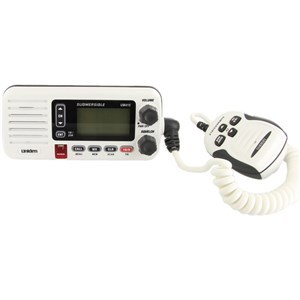 If you own or operate a fishing or small passenger marine vessel, the FCC wants to remind you to upgrade your craft with VHF radiotelephone equipment with Digital Select Calling (DSC) capability by January 20, 2016.
If you own or operate a fishing or small passenger marine vessel, the FCC wants to remind you to upgrade your craft with VHF radiotelephone equipment with Digital Select Calling (DSC) capability by January 20, 2016.DSC is a system designed to automatically contact other marine vessels and instantly send a formatted distress, safety or emergency alert for rescue. The system is approved for use internationally and is capable of ship-to-ship or ship-to-shore operation anywhere in the world.
According to the FCC, all fishing and small passenger marine vessels operating in "Sea Area A1 within twenty nautical miles seaward of the territorial baseline along the East, West, and Gulf coasts of the United States, excluding Alaska, and including Hawaii, Puerto Rico, Guam, the Virgin Islands of the United States, and the Northern Mariana Islands of Saipan, Tinian and Rota... must upgrade to VHF-DSC equipment no later than January 20, 2016".
For details, read the official FCC public notice (pdf).
Fixed Mount VHF marine radios with Class-D (DSC) Digital Select Calling capability are in stock and available from Buy Two Way Radios.
-
Two Way Radio Show Podcast 100th episode celebration - enter and win!
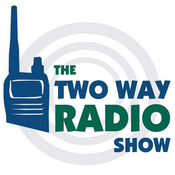
The Two Way Radio Show Podcast will celebrate it's 100th episode this month, and you're invited - to win!On February 21, 2011, Buy Two Way Radios launched The Two Way Radio Show, a podcast dedicated to radio related equipment and communications. Hosted by Danny Feemster, Anthony Roque and Rick Savoia, TWRS covers topics related to many radio services and types of radios, including FRS, GMRS, business, CB, amateur, air band, and marine.
Nearly five years and 99 episodes later, the TWRS podcast is going strong, with subscribers and dedicated listeners from the US, Canada, Australia, The UK and many other countries around the world. The show can be heard from many podcast directories across the web, and is available to hear on demand 24/7 on iTunes, Blubrry, Stitcher Radio, and on our blog at The Two Way Radio Show.
Now, with episode 100 approaching, we want to do something special to celebrate, and our listeners will be a part of it all - with a chance to win!
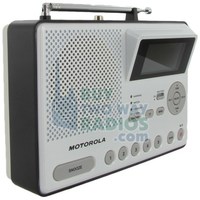 All you need to do is send us a comment listing your favorite episode of the podcast and you'll be entered in a drawing to win one of the following:
All you need to do is send us a comment listing your favorite episode of the podcast and you'll be entered in a drawing to win one of the following:One lucky winner will receive a Motorola MWR839 AM/FM Weather Alert Radio valued at $90!
Ten winners will receive an official Buy Two Way Radios Swag Bag filled with - you guessed it - swag!
To Enter:
Send your comments / entries via e-mail to [email protected], tweet them to us @2WayRadios or post it on our Facebook page. You can also leave comments in the Two Way Radio Show 100th episode Enter your comments to win! discussion thread in the Two Way Radio Forum or enter them in the comments box below.Hint:
A complete list of episodes is located on the Two Way Radio Show blog page.Comment entries must be submitted by midnight Monday, December 21, 2015 to qualify for the drawing. Winners will be announced on the podcast and notified by e-mail after release of the 100th episode.
The odds of winning depend on the number of entries received. Winning comments will be selected randomly in a drawing and the winners announced on the show. These and other selected comments may also be read on the 100th episode of show.
Limit one entry per person. Void where prohibited or restricted by law.
-
Announcing the new Wouxun KG-UV9D (Plus) Limited Edition!
Earlier this year, Wouxun launched the KG-UV9D Multi-Band Two Way Radio. Similar in style to the popular and venerable KG-UV8D, with its impressively large, color display, the 9D upgraded the screen of the 8D and added 5 additional RX bands for a grand total of seven.
The KG-UV9D generated quite a bit of interest in the ham community, and it was naturally assumed this new transceiver would only add to the features of its predecessor without taking any of them away. While it was generally well received, some users lamented the fact that the 9D lacked the one specific feature that gave the 8D much of its venerability. We're talking, of course, about cross-band repeat functionality.
For those who wished for it, you're in luck. Now Wouxun is granting that wish, and just in time for the holidays, with the introduction of the new Wouxun KG-UV9D (Plus)!
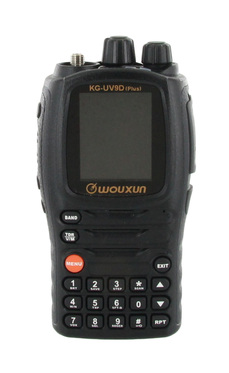 The KG-UV9D (Plus) has all of the standard features of the KG-UV9D, plus cross-band repeat capability. It also has 6 additional menu items, most of which are related to cross-band repeat configuration.
The KG-UV9D (Plus) has all of the standard features of the KG-UV9D, plus cross-band repeat capability. It also has 6 additional menu items, most of which are related to cross-band repeat configuration.While the Plus does look nearly identical to the standard 9D cosmetically, on closer inspection there are noticeable differences. The buttons on keypad of the UV9D are somewhat square, but the buttons on the 9D Plus are rounded. The speaker grill on the Plus is wider, and the knobs on top are shorter and wider. The PTT button looks and feels different as well, with a bit more play on the edges. The chassis of the UV9D Plus is also a little thicker, measuring about a millimeter or so more than the regular 9D.
However, both radios use the same battery, belt clip, desktop charger, case and other accessories, plus they use the same Kenwood K1 accessory connector, which means if you already have a 9D, adding a 9D Plus to the mix really won't be much of an issue.
The KG-UV9D (Plus) is news, to be sure, but here's the real kicker. This radio isn't available in a general release. It is currently only available as a part of a special package for the 2015 holiday season - The Wouxun KG-UV9D (Plus) Limited Edition!
This Limited Edition is a complete 9D (Plus) package at an incredible price point. It includes:
- The Wouxun KG-UV9D (PLUS) Two Way Radio
- Two Li-Ion Battery Packs - yes, two of them
- Multi-Band High Gain Antenna
- Dual Band Stubby Antenna
- Two Belt Clips - one for each battery
- Wrist Strap
- Charger Tray
- AC Adapter
- 12V DC Adapter - to charge in a vehicle!
- Battery Eliminator - to power directly in a vehicle!
- C-Ring Earpiece with PTT - nice!
- Speaker Microphone - another nice extra!
- Leather Case
- SMA Male to UHF Female (SO-239) Adapter - to connect a mobile antenna!
- USB Programming Cable
- USB Driver CD
- Programming Software CD
- Owners Manual
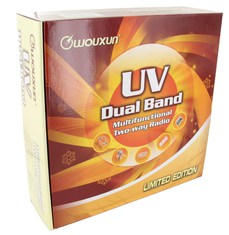 This isn't a mere mish-mash of Wouxun stuff thrown into a box, either. The Wouxun KG-UV9D (Plus) Limited Edition is a complete collection of the radio and accessories assembled by the manufacturer and presented in style - in a limited edition holiday box!
This isn't a mere mish-mash of Wouxun stuff thrown into a box, either. The Wouxun KG-UV9D (Plus) Limited Edition is a complete collection of the radio and accessories assembled by the manufacturer and presented in style - in a limited edition holiday box!Great, but how much does it cost? Well, the regular KG-UV9D minus a cross-band repeat feature currently sells for $179.99 without any extras. This kit includes a radio plus cross-band repeat, plus over $100 in accessories. The price? The Wouxun KG-UV9D (Plus) Limited Edition is only $229.99.
No doubt about it, plus or not, this package makes a phenomenal gift, either for your favorite friend or family member who likes ham radio, or just for yourself. The KG-UV9D Plus LE Dual Band Two Way Radio - Limited Edition is a real value, especially for the price.
There's just one caveat. Wouxun only made one thousand of these sets. One thousand. That's why it's a Limited Edition. We have them at Buy Two Way Radios, but when they're gone, we may not be able to get any more. If you want one for the holidays, you may want to get it now.
-
FCC eliminates GMRS regulatory fee
The FCC has eliminated the regulatory fee required to obtain a license for the GMRS.
In a Report and Order released May 21, 2015 as part of the FCC's notice of proposed regulatory fees for fiscal year 2015, the commission issued a Report and Order to eliminate the regulatory fee for the General Mobile Radio Service effective this year.
The fee, which was previously assessed at $5 per year, added $25 to the total cost of a GMRS license, which has a term of five years. While it does not eliminate the cost of a license altogether, the complete elimination of the regulatory fee brings the total cost of a General Mobile Radio Service license from $90 down to $65.
According to the FCC, the fee simply wasn't worth the cost. in the Report and Order, the commission stated:
"After analyzing the costs of processing fee payments for GMRS, we conclude that the
Commission's cost of collecting and processing this fee exceeds the payment amount of $25. Our costs have increased over time and now that the costs exceed the amount of the regulatory fee, the increased relative administrative cost supports eliminating this regulatory fee category."The GMRS license required two fees, the application fee and the FCC regulatory fee. The total cost of a GMRS license has risen through the years, mostly due to automatic, scheduled increases in the application fee. In 2014 the total cost of a GMRS license rose again, from $85 to $90. The cost of a GMRS license is currently greater than the cost of most higher end GMRS radios for which the license is required to operate, and more than double the cost of an entry level radio.
The disproportionately high cost of GMRS licensing compared to other types of radio service licenses and to the GMRS radio equipment itself has been a growing complaint among GMRS users, and is a primary reason why many who are aware of the license requirement do not purchase one.
The FCC, acknowledging the problem, gave it as another reason to remove the fee. "Once eliminated, these licensees will no longer be financially burdened with such payments and the Commission will no longer incur these administrative costs that exceed the fee payments.", the commission added in the report.
This is not the first time the FCC has considered the costs and caveats of licensing the GMRS. In 2010, the commission proposed to do away with the requirement for individual licensing altogether and instead license by rule. However, backlash from the community of licensed GMRS users helped stall the decision and as the FCC has since noted on their web site, "the proposal is still pending".
Is the elimination of the GMRS regulatory fee the beginning of the end of the individual GMRS license requirement? If not, will the application fee remain and continue to rise automatically on its own until it even surpasses the previous $90 fee?
Tell us what you think. Enter your comments below.






